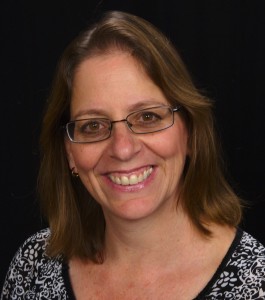Member Spotlight: Susan Gruber
For many, the path to becoming a statistician is a circuitous one, and that was certainly the case for me. At the age of 45, with a history of job titles including chemist, computer scientist, teacher, and mom, I entered the MPH program in epidemiology and biostatistics and, from there, the PhD program in biostatistics at the University of California at Berkeley School of Public Health. The defining moment actually occurred more than a decade earlier.
When my oldest son was born, we were told in no uncertain terms that the baby must never be put to sleep on his back because it would increase the risk of death due to aspiration. Fast-forward three years to the birth of my second child, when we were unequivocally advised to always place the baby on his back to reduce the risk of SIDS. How could medical decisionmakers have reversed course so quickly on an activity we have been doing since the dawn of humanity? And today, 20 years later, are we confident that the current recommendation is the correct one?
These questions speak to the heart of what we do as statisticians and highlight a debate most of us have had with others or ourselves at some point. Decisions must be made and actions must be taken in the face of incomplete information. As statisticians, are we bound to always deliver an estimate, or are there times when the appropriate course of action is to conclude the data do not contain sufficient information to reliably estimate the desired quantity? To what extent are we responsible for the conclusions drawn from estimates we report? From a layman’s perspective, in the absence of reliable data on all-cause mortality stratified by sleeping position, should I have been admonished to keep my oldest son from sleeping on his back? Can a child aspirating vomit and dying in his sleep teach us anything about caution in translating statistical evidence into a one-size-fits-all recommendation? What biostatisticians do has real implications for real people.
I greet the recent trend toward personalized medicine with enthusiasm. Treatment recommendations that are conditional on covariates are likely to be more effective. Babies who have acid reflux are presumably at higher risk of mortality when laid on their buy ativan without no prescription backs than babies without. Should that be mentioned in instructions given to new parents? Or, in reality, might that make matters worse by piling information overload on top of parental sleep deprivation? The problems are complex and perhaps best addressed through a process of asking clear questions, collecting high-quality data, and applying causal inference methodology to find answers where there is support in the data.
In 2009, I had the privilege of visiting a group of U.S. Food and Drug Administration (FDA) employees with my PhD adviser, Mark van der Laan. The people in the room were the ones who approve or deny use of drugs, write the warning labels, and study post-market data on adverse events. Their determinations rely on statistical analyses of incomplete data, and any decision—even one to postpone a final decision—has health consequences for the population. I’m not sure how many of us outside government understand that each of these individuals shoulders a weighty public service burden. I certainly had not, and I found it heartening to witness.
In 2012, I once again had the privilege of going to a meeting of a consortium of FDA, industry, and academic researchers, this time with Jamie Robins, who along with Miguel Hernán, is mentoring me in my current role as a postdoctoral research fellow in the department of epidemiology at the Harvard School of Public Health. Scientists, economists, policymakers, and medical practitioners are increasingly turning to large observational data sets to find answers to causal questions. There are enormous computational, philosophical, statistical, and mathematical challenges, and interdisciplinary teams are rising up to meet them. I see this as another cause for optimism and an indication we are on the right path.
The turns my life has taken since beginning this journey in 2005 amaze me. When I first dreamed up the idea of going back to school, I almost didn’t do it, because I thought I had waited too long. But it turns out I hadn’t. Given my background, it is not surprising that my research focuses on methodological advances in causal effect estimation. I am thrilled to find myself part of the burgeoning community of biostatisticians working on causal inference. In the words of poet Louise Driscoll, “Hold fast your dreams!”


















